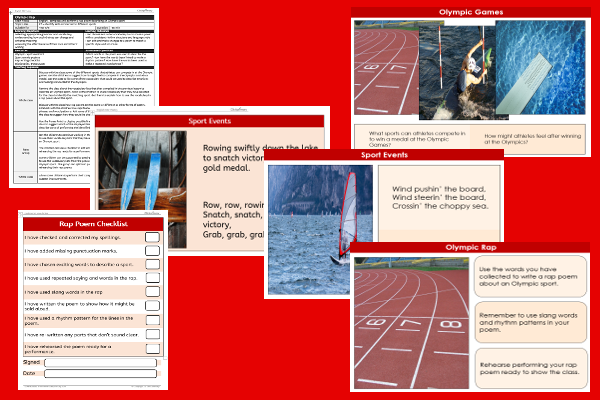Home > Key Stage Two > English > Extra > Sports Rap
Lesson Five – Olympic Rap

This English teaching pack for Key Stage Two gets the children to practise composing, presenting and performing a rap poem using special vocabulary words and rhythm structures to describe an Olympic sport.
The class can explain and model how to edit and make changes to their completed poems before rehearsing the poetry raps ready for a performance to an audience.
Download this teaching pack including a lesson plan, classroom activities and an interactive presentation to practise composing, presenting and performing a rap poem using special vocabulary words and rhythm structures to describe an Olympic sport
Activities in this teaching pack include display posters to describe how to compose lines for a rap poem using special vocabulary words and rhythm patterns and a worksheet to edit and make improvements to a poem describing an Olympic sport to prepare for a class performance.
The interactive presentation gets the children to explore how to compose and perform a rap poem using special vocabulary words and rhythm structures to describe an Olympic sport.
This lesson is part of an English scheme of work to get the children to select vocabulary and rhythm structures to compose and perform rap poems describing actions and events connected to different Olympic sports. There are teaching activities for shared learning, differentiated worksheets to support independent learning and interactive presentations to introduce concepts and key skills.
-

Theme Park Visit
Practise identifying and calculating the timing and duration of rides and events when visiting a theme park on a special family trip
-

Family Holiday Trips
Identify and record how to compose and publish recounts using adverbials of time and place to describe family holidays to different places in the world
-

Money Multiplication
Explain and model how to use standard written calculation methods to multiply money amounts in pounds and pence when solving number problems
-

Sport Teams
Explain and model how to use brackets and dashes to add extra information to sentences describing how to play sports and games as part of a team
